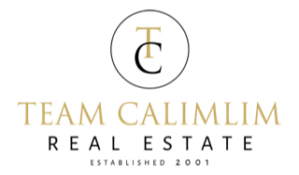Get a Mortgage Pre-Approval
An important ingredient in a successful home search is knowing how much you can afford. You don’t want to fall in love with a property only to find out it’s outside your price range.
That’s why I recommend getting a Mortgage Pre-Approval. This is a document from your bank or other lender stating how much of a mortgage they are willing to give you. There are two advantages to getting this pre-approval:
- It gives you the peace-of-mind of knowing you can afford homes you view on the market, and won’t have problems arranging financing.
- It’s a sign to sellers that you are a serious, prepared buyer – which gives you the edge when making an offer.
You can arrange for a Mortgage Pre-Approval with your bank or other lender, or by working with a good mortgage broker. I’m well-connected in the local real estate scene, so if you want me to recommend a reputable broker or lender, please contact me.
How Much Home Can You Afford?
Banks and lenders use specific criteria to determine how much of a mortgage they’re willing to offer you. They look at your income, expenses, credit history and employment status, as well as the down payment you plan to make on a home. It may seem like a scary process, but it is actually straightforward. You can usually get a Mortgage Pre-Approval in a day. You’ll be glad that you did.
By knowing what you can afford, you can confidently shop within that price range. For example, if you qualify for a $250,000 mortgage, and you have another $100,000 available as a down payment, you can look for homes in the $350,000 range.
10 Documents Needed For A Mortgage Application
Unlike the prequalification process, there are some standard documents you’ll need to submit for a mortgage preapproval. Most of these are standard for all borrowers. However, other documents may be required depending on the type of loan you want to get, the type of residence you wish to buy and the kind of work you do.
1. Personal Identification
The mortgage lender will want to make sure they’re lending to the right person – and not someone pretending to be you – so a valid form of identification will be required. It must be government-issued and have a photo. Acceptable forms of ID include a state-issued driver’s license or ID card, passport or U.S. alien registration card.
2. Social Security Card
Your Social Security card is another form of identification that may be requested by your lender. It adds another verification of your identity and helps match your Social Security number with your picture ID to further confirm it’s you who’s getting the loan. You’ll also need to supply your Social Security number to run a credit check.
3. Pay Stubs
Your most recent pay stubs help verify your monthly income and show proof of employment. If you’re paid with a physical check, you should have the actual stub, which can be copied and sent to the lender. If you’re paid through direct deposit, your company should have electronic copies of your stubs. You may also be able to request electronic copies from your bank.
4. Bank Statements
Bank statements are required for obtaining preapproval because they help verify your income and show that you can afford your down payment. These statements may also uncover any red flags, like bounced checks, insufficient funds, unstable income, payments to other bank accounts and large deposits from unknown sources.
You’ll likely be asked for checking and saving account numbers and statements for each bank you have used for the last 2 to 3 months.
5. Tax Documents
Certain tax documents, including your two most recent W-2 forms, are also among the documents needed for mortgage preapproval. These documents are another way to verify your income and show how much was taken out for tax purposes. You’ll likely be asked to provide W-2s for the last 2 years from current and past employers within that time frame.
While you should keep a copy of your tax returns and W-2s, if you are currently missing some, you may be able to request tax transcripts and tax returns from the IRS. If you used a tax preparer or tax software to file your taxes, they might also have copies.
6. Investment Account Statements
Savings and checking accounts aren’t the only places people keep their money – and your job may not be your only source of income. Lenders want to see all of your income and assets and, therefore, will also need to review your investment account statements.
These types of accounts include your 401(k), 403(b), IRAs, stocks, bonds and mutual funds.
7. List Of Monthly Debts
Your debt-to-income ratio (DTI) helps lenders decide whether or not you’re able to take on more debt. It shows how much money you have going out versus what you have coming in. There are maximum DTIs for mortgage approval, depending on the type of loan. If your DTI is above that maximum, you may not qualify for a mortgage loan.
Your lender will ask for a list of your fixed debts, which are those that are regular, recurring and have a minimum required payment. These debts may include:
Rent or mortgage
Car loans
Student loans
Credit cards
Personal loans
Home insurance
Homeowners association (HOA) fees
Medical bills
Monthly, variable expenses aren’t included in your DTI. These may include expenses that change monthly, like utilities, groceries, entertainment and transportation.
When providing your list of debts, include your creditor’s name and contact information, your total balance due and the required minimum monthly payment.
8. Rental Information And Landlord References
Lenders want to be assured you’ll make your monthly mortgage payments on time. If you’re a renter, you’ll likely be required to show that you’ve made on-time rent payments in the past.
You may also be required to include the names and contact information of the landlords you’ve had previously. This will help the lender verify that you’ve upheld your financial responsibilities as a tenant. How far back you’ll need to show payments or landlord information may depend on your lender.
9. Gift Letters
If a loved one gives you money to use as a down payment, a gift letter will be required to prove the money is not a personal loan that needs to be paid back. If it was a personal loan, it would add to your DTI and possibly make it more difficult for you to pay back your loan.
Certain loans have rules on who you can receive gift money from. For example, conventional loans only allow gifts from family members, with the exception of Fannie Mae also allowing godparents, domestic partner relatives, and former relatives to give gifts. FHA loans also allow gifts from employers, labor unions and first-time home buyer programs, in addition to gifts from most family members.
A typical gift letter will include:
The donor’s name, contact information and relation to the recipient
The recipient’s name and contact information
The gift amount and date the gift was or will be received
How the recipient will use the gift money
Confirmation that the gift doesn’t need to be repaid
Signatures of the donor and recipient
10. Credit Report
A credit report is one of the only documents on this mortgage preapproval checklist that you won’t need to provide your lender. They will pull the report themselves once they have your permission to do so.
Your credit report can provide insight into the type of borrower you are and how well you handle different types of debt. It will reveal any red flags, like late or missed payments, significant debts and past bankruptcy. Lenders will also use your report for determining what mortgage rate your loan will have and the amount they’ll approve you for.
While the lender pulls the report on their own, it’s wise to review your credit score beforehand to make sure you’re in a good position to qualify for a loan and to spot and fix any errors, if necessary.
Documents You’ll Need If You Already Own A Home
If you already own a home and are applying for a mortgage to purchase investment real estate or a vacation property, you’ll need to provide recent mortgage statements for your current house. This will show the equity in your home, along with your principal balance and monthly payment.
These documents will also help the lender determine your DTI and whether you can afford an additional mortgage payment. This is especially important if you have a loan on your current home and this will be an additional mortgage.
Documents You’ll Need If You’re Self-Employed
If you’re self-employed or own a business, you’ll also be required to provide your tax documents and business returns for the past 1 to 3 years, depending on your lender’s requirements.
You’ll also need to show your year-to-date audited Profit and Loss statement. If you can’t obtain that statement, you’ll need to provide a year-to-date unaudited Profit and Loss statement, along with your most recent 60 days of business bank statements.
Documents You’ll Need For Nonconventional Loans
The documents listed above are typically required for both conventional and nonconventional loans, including FHA loans and USDA loans. However, some nonconventional loans may require additional documents for the mortgage process.
For example, since only certain people may qualify for the VA loan (including veterans, active-duty military, and surviving spouses), you’ll need to provide further documentation to verify your eligibility. Depending on the borrower, such required forms may include:
- DD Form 214: This verifies your military discharge, retirement or separation and is required for veterans. Surviving spouses must provide their spouse’s DD Form 214, along with their marriage license and spouse’s death certificate.
- Retirement Points Statement (NGB Form 23): This form confirms the number of credible years of service in the military, including attending drills and going through training. This is needed for discharged members of the Army National Guard.
- Statement of Service: A statement of service proves active military status for active-duty service members or current National Guard or Reserve members. It must be printed on official military letterhead and include the service member’s full name, date of birth, Social Security number, entry date of duty and time lost. It may also include credible years of service, date of activation, orders activated, training status and the name of the commander providing this information.
The Bottom Line: Knowing What You Need For A Mortgage Preapproval Can Help Speed Up The Process
A lender wants to make sure that you’ll be able to pay back your loan and aren’t too much of a risk to lend to. In order to do this, they will need to verify your income, assets and debt. To ensure this process goes smoothly, we recommend preparing all of these documents before starting the home buying process. By ensuring that you have all the information required by your lender, you can quickly progress to the next step in your homeownership journey.
Have questions about arranging financing? Please submit the form below or call or email me.

